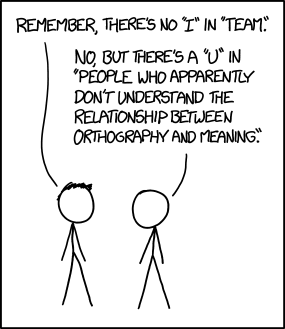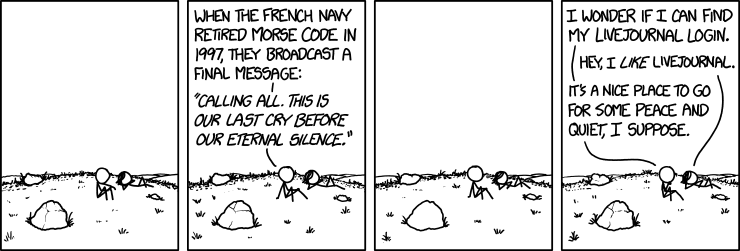The question of the effects of the supply restrictions in zoning on housing prices has erupted among leftist urbanist bloggers again. On the side saying that US urban housing prices are rising because of zoning, see anything by Daniel Kay Hertz, but most recently his article in the Washington Post on the subject. On the side saying that zoning doesn’t matter and the problem is demand (and by implication demand needs to be curbed), see the article Daniel is responding to in Gawker, and anything recent by Jim Russell of Burgh Diaspora, e.g. this link set and his Pacific Standard article on the subject.
This is not a post about why rising prices really are a matter of supply. I will briefly explain why they are, but the bulk of this post is about why, given that this is the case, cities need to apportion the bulk of their housing via market pricing and not rent controls, as a matter of good political economy. Few do, which is also explainable in terms of political economy.
But first, let us look at the anti-supply articles. Gawker claims that San Francisco prices are rising despite a building boom. We’ll come back to this point later, but let me note that in reality, growth in housing supply has been sluggish: Gawker links to a SPUR article about San Francisco’s housing growth, which shows there was high growth in 2012, but anemic growth in previous years. The Census put the city’s annual housing unit growth last decade at 0.8%. In New York, annual growth was 0.5%, as per a London study comparing London, Paris, New York, and Tokyo. In contrast, Tokyo, where zoning is relatively lax, growth was 2%, and rents have sharply fallen. The myth that there is a building boom in cities with very low housing unit growth is an important aspect of the non-market-priced system.
Jim’s arguments are more interesting. He quotes a Fed study showing that housing vacancies in the most expensive US cities have not fallen, as we’d expect if price hikes came from lack of supply. (In San Francisco, vacancies went up last decade, at least if you believe that the Census did not miss anyone.) This is too not completely right, because in Los Angeles County, as noted on PDF-page 18 here, vacancies did recently fall. But broadly, it’s correct that e.g. New York’s vacancy rate has been 3% since the late 1990s, as per its housing surveys. But I do not think it’s devastating to the supply position at all. The best way to think about it is in analogy with natural rates of unemployment.
Briefly: it’s understood in both Keynesian and neo-classical macroeconomics that an economy with zero employment will have high and rising inflation, because to get new workers, employers have to hire them away from existing jobs by offering higher wages. There is a minimum rate of unemployment consistent with stable inflation, below which even stable unemployment will trigger accelerating inflation. In the US, this is to my understanding about 4%; whether the recession caused structural changes that raised it is of course a critical question for macroeconomic policy. A similar concept can be borrowed into the more microeconomic concept of the housing market.
There’s also the issue of friction, again borrowed from unemployment. There’s a minimum frictional vacancy, in which all vacant apartments are briefly between tenants, and if people move between apartments more, it rises. For what it’s worth, the breakdown of 2011 New York vacancies on pages 3-4 by borough and type of apartment suggests friction is at play. First, the lowest vacancy by borough is 2.61%, in Brooklyn, not far below city average. Second, the only type of apartment with much lower vacancy than the city average is the public housing sector, with 1.4% vacancy, where presumably people stay for decades so that friction is very low; rent-stabilized units have lower vacancy than market-rate units, 2.6% vs. 4.4%, which accords with what I would guess about how often people move.
So if high rents are the result of supply restrictions, and it appears that they are, the way to reduce them should be to relax zoning restrictions. If this is done, then this allows living even in currently expensive areas without spending much on rent. Urban construction costs are lower than people think: New York’s condo average is $2,300 per square meter, and London’s is not much higher, entirely eaten by PPP conversions; Payton Chung notes the much higher cost of high-rises than that of low-rises, but the cost of high-rise apartment buildings is still only about $2,650/m^2 in Washington, and (using the same tool) about $3,100 in New York, and at least based on the same tool, mid-rises are barely any cheaper. For US-wide single-family houses, construction costs are 61.7% of sale prices, but the $3,100 figure already includes overheads and profit. Excluding land costs, which are someone else’s profit, construction, profit, and overheads are 92.5%; so let’s take our $3,100/m^2 New York high-rise and add the rest to get about $3,300, which is already more than most non-supertall office skyscrapers I have found data for in other major cities. The metro area appears to have a price-to-rent ratio of about 25, and with the caveat that this may go down slightly if the city gets more affordable, this corresponds to a monthly rent of $11 per square meter, at which point, a 100-m^2 apartment, sized for a middle-class family of four, becomes affordable, without subsidies, to families making about $44,000 a year and up, about twice the poverty line and well below the median for a family of that size. If we allow some compromises on construction costs – perhaps slightly smaller apartments, perhaps somewhat lower-end construction – we could cover most of the gap between this and the poverty line.
But given that demand for housing at prices that match construction costs, there has to be a way of allocating apartments. Under market pricing, they’re allocated to the highest bidder. If there is a perfectly rigid supply of 2 million housing units and a demand for 4 million at construction costs, the top 2 million bidders get housing, at the rent that the 2 millionth bidder is willing to pay.
I do not know of any expensive city with low home ownership that uses market pricing: too many existing residents would lose their homes. High home ownership has the opposite effect, of course – Tel Aviv may have rising rents, and high price-to-income ratios, but since home ownership is high, the local middle class is profiting rather than being squeezed, or at least its older and slightly richer members are.
Instead, cities give preference to people who have lived in them for the longest time. Rent control, which limits the increase in annual rent, is one way to do this. City-states, i.e. Singapore and Monaco, have citizenship preference for public housing to keep rents down for their citizens. Other cities use regulations, including rent control but also assorted protections for tenants from eviction, to establish this preference. Instead of market pricing allocation, there is allocation based on a social hierarchy, depending on political connections and how long one has lived in the city. People who moved to San Francisco eight years ago, at age 23, organize to make it harder for other people to move to the city at this age today.
Going to market pricing, which means weakening rent controls over the next few years until they’re dead letter, is the only way to also ensure there is upzoning. Although rent control and upzoning both seem to be different policies aimed at affordability, they’re diametrically opposed to each other: one makes it easy for people to move in, one makes it hard. As I mentioned years ago, rent-controlled cities tend to have parallel markets: one is protected for long-timers, and for the rest there is a market that’s unregulated and, because so much of the city’s housing supply is taken off it, very expensive. In exchange-rate dollars, I pay $1,000 for a studio of 30 square meters, of which maybe 20 are usable, the rest having low sloped ceilings. In PPP dollars it’s $730, still very high for the size of the unit. If I put my name on a waiting list, I could get a similar apartment for a fraction of the price; to nearly all residents, rents are far lower than what I pay, because of tight rent controls. Stockholm at least has a relatively short waiting list for rent-controlled apartments, 1.5 years, for international visitors at my university; American cities (or perhaps American universities) never do foreigners such favors.
The problem here is entirely political. Cities have the power to zone. Thus, supply depends entirely on whether local community leaders accept more housing. This housing, almost invariably, goes to outsiders, who would dilute the community’s politics, forming alternative social networks and possibly caring about different political issues. It’s somewhat telling that ultra-Orthodox Jews in the New York areas support aggressive upzoning, since the new residents are their children and not outsiders; Stephen Smith has written before about the Brooklyn Satmars’ support for upzoning, and the resulting relatively low prices. In the vast majority of the first world, with its at- or below-replacement birth rates, this is not the case, and communities tend to oppose making it easier to build more housing.
There is a certain privilege to being organized here. We see the pattern when we compare how US minorities vote on zoning to what minority community leaders say. In San Francisco specifically, activists who oppose additional development have made appeals to white gentrification in nonwhite neighborhoods, primarily the Mission District. Actual votes on the subject reveal the exact opposite: see the discussion on PDF-pp. 13-15 of this history of Houston land use controls, which notes that low-income blacks voted against zoning by an overwhelming margin because of scare tactics employed by the zoning opponents. (Middle-income blacks voted for zoning, by a fairly large margin.) Polling can provide us with additional data, less dependent on voter turnout and mobilization, and in Santa Monica, Hispanics again favor new hotel development more than whites. In areas where being low-income or nonwhite means one is not organized, low-income minorities are not going to support restrictions that benefit community leaders.
The result is that organized communities are going to instead favor zoning, because it gives them more power, as long as they are insulated from the effect of rising prices. In suburbs with high home ownership, they actually want higher prices: my rents are their property values. In cities with low home ownership, rent controls provide the crucial insulation, ensuring that established factions do not have to pay higher rents. Zoning also ensures that, since the developers who do get variances can make great profits, community groups can extort them into providing amenities. This is of course the worst in high-income areas: every abuse of power is worse when committed by people who are already powerful. But the poor can learn to do it just the same, and this is what happens in San Francisco; TechCrunch has a comprehensive article about various abuses, by San Franciscans of all social classes, culminating in the violent protests against the Google shuttles, and in many cases, the key to the abuse was the community’s ability to veto private developments.
The risk, of course, is displacement. As the gap between the regulated and market rent grows, landlords have a greater incentive to harass regulated tenants into leaving. This is routine in New York and San Francisco. Community groups respond by attacking such harassment individually, which amounts to supporting additional tenant protections. In California, this is the debate over the Ellis Act. The present housing shortages are such that supporting measures that would lower the market rent has no visible short-term benefits, and may even backfire, if a small rent-controlled building is replaced by a large unregulated building.
So with rent controls, community groups have every incentive to support restrictive zoning, and none to support additional development. With market pricing, the opposite is the case. What of low-income city residents’ access to housing, then? Daniel mentions housing subsidies as a necessity for the poor. To be honest, I don’t see the purpose, outside land-constrained cities like Hong Kong and Singapore. If it is possible through supply saturation to cut rents to levels that are affordable to families making not much more than the poverty line, say 133% of the US poverty line, the Medicaid threshold, then direct cash benefits are better. In the ongoing debate over a guaranteed minimum income, the minimum should be slightly higher than the US poverty line, which is lower as a proportion of GDP per capita than most other developed countries’ poverty lines, as seen in the government programs with slightly higher limits, led by Medicaid.
Leftists have spent decades arguing for state involvement in health care and education – not just cash benefits, but either state provision, or state subsidies combined with some measure of cost control. There are many arguments, but the way I understand them, none applies to housing:
1. Positive externalities: Ed Glaeser has noted that if some people in a metro area get more education then there is higher income growth even for other people in the area. In health care, there are issues like herd immunity.
2. Very long-term benefits: if college is as expensive as it is in the US today, it takes many years for graduates’ extra incomes to be worth the debt. With health care, the equivalent is preventive care. When benefits take so much time to accrue, first some people face poverty traps and don’t have the disposable income today to invest in their own health and education, and second, the assumptions of rational behavior in classical economics are less true.
3. Natural monopolies outside large cities: hospitals, schools, and universities have high fixed capital costs, so there can only be sufficient competition in very large cities. The same is of course true of rail transit.
4. Asymmetric information: students and parents can’t know easily whether a school is effective, and patients face the same problem with doctors; short-term satisfaction surveys, such as student evaluations, may miss long-term benefits, and are as a result very unpopular in academia.
With housing, we instead have competitive builder markets everywhere, no appreciable benefits to having your neighbor get a bigger or better apartment, and properties that can be evaluated by viewing them.
The only question is what to do in the transition from the present situation to market pricing. This is where a limited amount of protection can be useful. For example, rent controls could be relaxed into a steady annual gain in the maximum allowed real rent. While market-rate housing remains expensive, public housing is a stopgap solution, and although it should be awarded primarily based on need rather than how long one has lived in the city, a small proportion should be set aside to people in rent-controlled small buildings that were replaced by new towers. None of this should be a long-term solution, but in the short run, this may guarantee the most vulnerable tenants a soft landing.
What this is not, however, is a workable compromise. Community organizations are not going to accept any zoning reform that lets in people who are members of out-groups. They have no real reason to negotiate in good faith; they can negotiate in bad faith as a delaying tactic, which has much the same effect as present zoning regimes. What they want is not just specific amenities, but also the power to demand more in the future; it’s precisely this power that ensures the neighborhoods that are desirable to outsiders are unaffordable to them. What they want is a system in which their political connections and social networks are real resources. A city that welcomes newcomers is the exact opposite. Expensive housing is ultimately not a market failure; it’s a political failure.



















![I did this calculation in my head many times while at a summer job. PLINK ... [agonizing pause] ... PLINK ... [agonizing pause] ... PLINK ...](/imgs/a/118/plink.png)






![More actual results: 'Hello. My name is Inigo Montoya. You [are the best. The best thing ever]', 'Revenge is a dish best served [by a group of people in my room]', and 'They may take our lives, but they'll never take our [money].' More actual results: 'Hello. My name is Inigo Montoya. You [are the best. The best thing ever]', 'Revenge is a dish best served [by a group of people in my room]', and 'They may take our lives, but they'll never take our [money].'](http://imgs.xkcd.com/comics/ios_keyboard.png)










